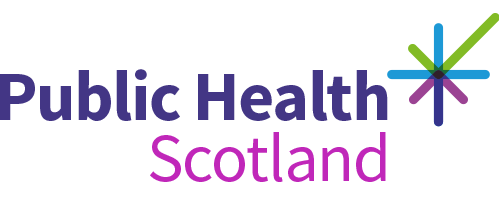Breaking down barriers: A tiered approach to getting Scotland moving
Posted on 18 June 2025 by Dionne Mackison
- Physical activity
Following the publication of the Physical Activity Referral Standards from Public Health Scotland (PHS) in 2022, the tiered approach to Scotland’s physical activity interventions has been revisited to help healthcare professionals plan and provide physical activity. On Scotland’s National Day of Movement, Dionne Mackison, Head of Place, Environment and Health Harms at PHS, reflects on the opportunity that this new guidance offers to support more people to become—and stay— physically active by tackling the barriers that stand in their way.
Physical activity is a cornerstone of a healthy lifestyle, offering numerous benefits that extend beyond physical health.
Engaging in regular physical activity can:
- Improve mental well-being by reducing symptoms of depression and anxiety
- Boost energy levels
- Prevent and manage health conditions like type 2 diabetes
- Improve bone and muscle health
- Promote better sleep
- Provide opportunities for social interaction
Movement looks and feels different for everyone and even small increases in activity can have benefits to our health, but not everyone in Scotland is currently benefitting from being physically active.
What the evidence tells us
Evidence shows that engaging in both Moderate to Vigorous Physical Activity (MVPA) and muscle-strengthening activity helps all people, no matter their age, lead healthier lives. Physical inactivity is a major risk factor for conditions such as coronary heart disease, stroke and diabetes. People who are not sufficiently active have a 20% to 30% increased risk of mortality.
It is estimated that over 3,000 deaths and almost 12,000 years of healthy life are lost due to physical inactivity in Scotland, as highlighted in PHS's Burden of Disease Attributable to Physical Inactivity report.
The 2023 Scottish Health Survey reported that 63% of adults in Scotland met the Chief Medical Officer’s (CMO’s) Physical Activity Guidelines for MVPA. However, only 29% met the combined physical activity guidelines for MVPA and muscle strengthening activity.
Nearly half of adults in Scotland (48%) have one or more long term conditions (LTC). Living with an LTC will have a significant impact on day-to-day activities and overall health. This is a very important finding as we know that those living with an LTC report very low levels of activity, and the primary reason is due to their health not being good enough.
These statistics are a call for action for us all. While it's heartening to see that the majority of adults are engaging in some form of physical activity, the low percentage meeting the full guidelines and the significant health impacts of inactivity are concerning. It's clear that we need to prioritise physical activity and create more supportive environments to help everyone, especially those with LTCs, to stay active and healthy.
This means getting more people engaged in physical activity, promoting its benefits and ultimately seeing the health gains an active lifestyle brings on an individual and population basis.
How our guidance can help
Our new guidance Scotland’s Tiered Approach to Physical Activity Interventions is a crucial piece of the jigsaw to help both healthcare professionals and physical activity providers work together to support actions that will improve life expectancy, reduce health inequalities, and enable people to live longer, healthier lives.
The guidance emphasises the need for a critical link between healthcare, community-based opportunities and support services to tackle barriers and support participation in physical activity. This involves not only healthcare professionals, but also community leaders and local service providers.
It enables healthcare professionals to:
- Know what level of intervention is suitable for each patient
- Confidently refer or signpost individuals to appropriate support
It supports service providers to:
- Map current services and resources
- Plan and develop interventions based on local needs
- Guide people through triage and exit routes from physical activity programmes
Why it matters
All movement counts, and the benefits extend beyond individual health to the wellbeing of our entire community. The Day of Movement highlights that movement looks different for everyone. This guidance will support collaboration between healthcare providers and physical activity providers in the community. By working together, we can create a healthier, more active Scotland, where everyone has the opportunity to lead a fulfilling and active life.
Additional Links
Scotland’s Tiered Approach to Physical Activity Interventions
A consensus statement on the risk of physical activity for people with long-term conditions – Moving Medicine
Physical Activity Referral Standards
Burden of Disease Attributable to Physical Activity Report (2024)
